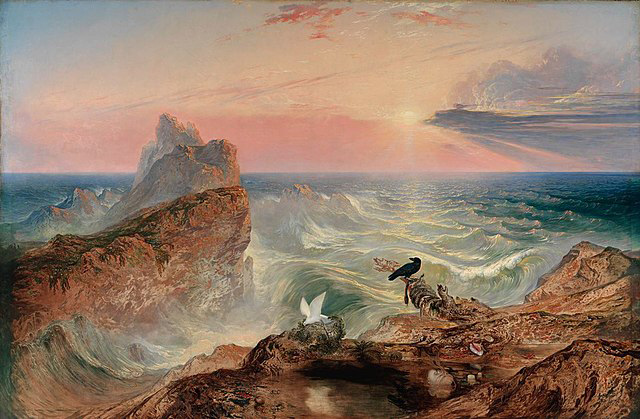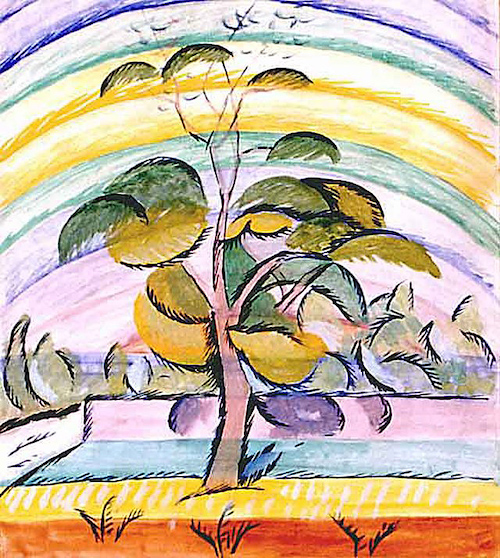

Michelle A. Stinson (PhD, University of Bristol) is a biblical scholar, chef-in-training, and serves as co-chair of the SBL “Meals in the HB/OT and Its World” unit. She is an Associate Fellow of KLC.

It had been an unseasonably warm and dry winter in Denver. As a result, the day’s impending storm system was being discussed in hope-filled tones everywhere I went on that January morning. Returning home, I sat and watched as the trees outside my upstairs window began to gather snowflakes as light and delicate as candyfloss. After an hour or so, the once bare branches were cloaked in delicate white snow. And if I didn’t know where I was and what season it was, I would tell you that I was seeing the snowy white blossoms of springtime that would soon blanket the almond orchards back in my former home state of California. And with this memory, and the expectations it stirred within me, I found myself drawn towards hope.
This extended season of Covidtide has created in many of us an inner restlessness, as the certainties of our remembered past lives continue to elude us in the present. And yet for me, even in the midst of a season of my own life upheavals, the sight of snow-blossoms on a bare winter branch simultaneously reminded me of the beauty in my Californian past and pulled me forward in hope to the surety of renewal found within creation itself.
Hope, in its most basic sense, is “a desire accompanied by expectation of or belief in fulfillment.”(1) Within the Hebrew Bible, the various words for “hope” hold this same sense of confident expectation, and yet here the foundation of this hope is in God and the expectation that God will fulfill God’s promises. The Hebrew Bible opens with the claim that God is the creator of the heavens and the earth (Gen 1:1). As the narrative unfolds, God’s creative efforts extend to the land and the living creatures (Gen 1–2). And yet it is God’s human creatures and their continued rebellions that lead eventually to God’s destruction of the created world through the waters of a flood (Gen 6–8). Yet even as God’s creation experiences de-creation, God’s renewed commitment to the created world and its inhabitants is shown through an act of re-creation:
“I will never again curse the ground because of humankind, for the inclination of the human heart is evil from youth; nor will I ever again destroy every living creature as I have done. As long as the earth endures, seedtime and harvest, cold and heat, summer and winter, day and night, shall not cease.” (Gen 8:21b–22)(2)
I would propose that the divine decree of Genesis 8:21–22 contains within it the fundamental elements for a reaffirmation of hope in the world. First, it reasserts YHWH as creator and sustainer of the heavens and the earth. Key terms used in verse 22 echo the initial creation story including “seed” (ערז, cf. 1:11–12,29), “day”/”night” (םוי/ הליל, cf. 1:5), and “cease/rest” (תבשׁ, cf. 2:2–3). Second, this decree underscores the reestablishment of the order embedded in creation. The hope expressed in Genesis 8:22 draws upon the cyclical certainty of agricultural seasons (“seedtime and harvest”), as well as nature’s daily (“day and night”) and seasonal (“cold and heat, summer and winter”) rhythms. And finally, it is a hope that rests in God’s faithfulness to humanity, not humanity’s response to this divine initiative. As Victor Hamilton aptly observes: “However irregular the human heart may be (8:21b), there will be regularity in God’s world and its cycles.”(3)

In her book, Scripture, Culture, and Agriculture, Ellen Davis defines “agrarianism” as “a way of thinking and ordering life that is based on the health of the land and of living creatures.”(4) This definition focuses on humanity’s engagement with the created world. Drawing loosely from her definition, I would propose that images of “agrarian hope” within the biblical text draw upon the reliability and orderliness of the created world as a mark of God’s sustaining care for the land and its living creatures. It is a hope expressed through the regular, repeated patterns of agricultural growth and the regular recurrence of elemental environmental cycles.
Within the Hebrew Bible, nature’s seasons and agriculture’s rhythms often serve as signposts of hope. Images drawn from Genesis 8:22’s divine promise of creational order appear time and again on the lips of biblical prophets and poets as they speak hope-filled words in the midst of Israel’s seasons of uncertainty. Psalm 126, one of the so-called “Psalms of Ascents” (Pss 120–134), provides an avenue to consider the rhetorical power of agriculture’s rhythms as an invitation to hope, an invitation offered to us as well in the midst of the disorientation of this prolonged pandemic.
Psalm 126 opens with a recollection of God’s work in Israel’s past, a time “when the LORD restored the fortunes of Zion” (verse 1a), a time marked by great joy (verses 2, 3). In verse 4, the gaze of the psalm singers turn from the past to consider the reality of their present need: “Restore our fortunes, O LORD, like the watercourses in the Negeb.” The psalm closes with a hope-filled plea, drawing its imagery of restoration from the agricultural cycles of “seedtime and harvest”:
May those who sow in tears
reap with shouts of joy.
Those who go out weeping,
bearing the seed for sowing,
shall come home with shouts of joy,
carrying their sheaves. (Ps 126:5–6)
Considered within the agrarian context of ancient Israel, the rhythm of “seedtime and harvest” becomes a powerful invitation towards hope. For it is the expectant hope of harvest that draws farmers to their fields with seed in hand, even in years of uncertainty and distress. And it is through the rhythms of nature and the cycles of agriculture that we experience the surety of God’s work in the world.

As our experience of this global pandemic continues, hope may seem elusive as so many of our human constructs for ordering our time and life are continually upended. In the midst of this disordered human reality, Israel’s poets call us towards a hope that lies outside of our calendars and planners and turns our eyes to creation as a signpost of hope. For as seen within Psalm 126, it is the elemental order rooted in agriculture’s rhythms that offer us a glimpse of hope after these long years of grief and loss. It is a hope that is reinforced as day by day the morning light grows earlier, as month by month the heavens bring forth much needed moisture for the land, and that as we go to plant our gardens after the last spring frost that the seeds in our hands hold the hope of a future harvest.

Get the latest issue in print or subscribe for the next three.